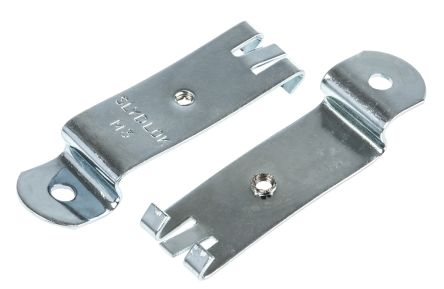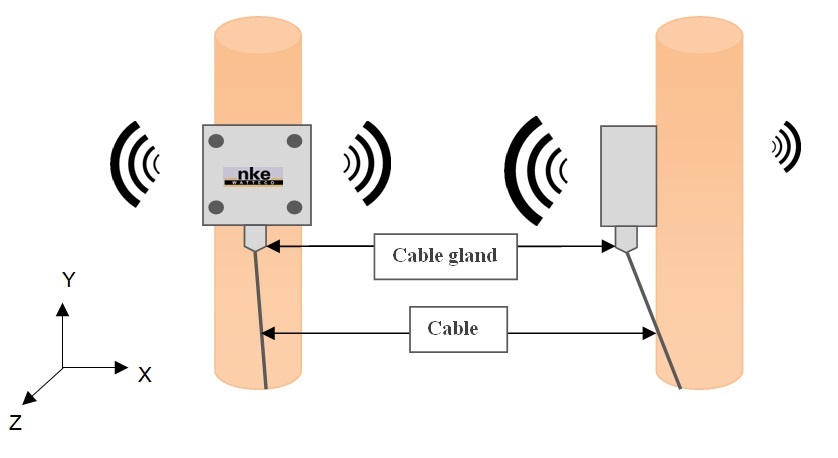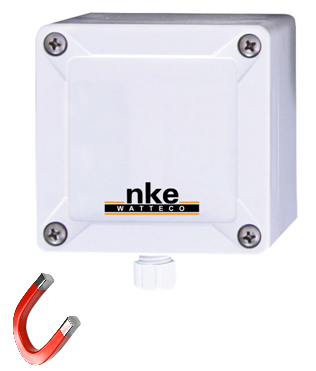Flash'O sensor
Declaration of conformity
Download the declaration of conformity
Presentation
Flash'O is a LoRaWAN class A sensor. It is a meter radio interface that transmits the cumulated flash LED values from any pulse meters: water, gas, electricity, energy. The sensor is connected to 1 optical probe or 3 optical probes that recovers light pulses.
The Flash'O sensor is powered by a disposable 3.6V A-type battery. It incorporates one or three digital input, and also includes an internal antenna.
The level or a counter can be transferred to the input. It is also possible to get the voltage of the power supply.
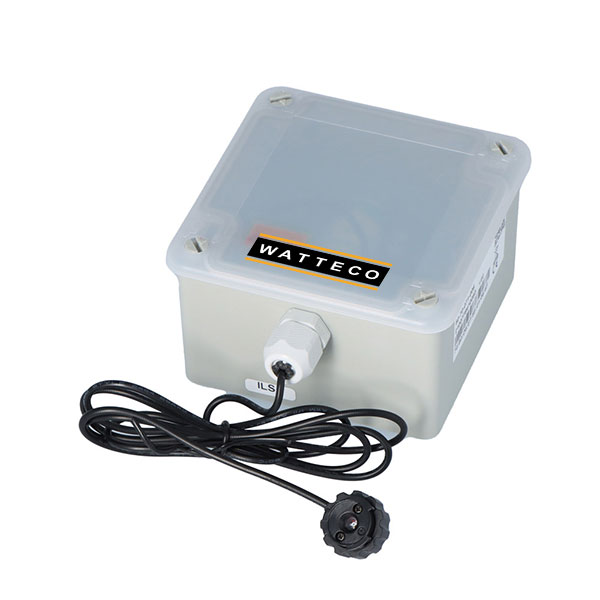
Compatibility notice between ENEDIS meters and TIC or Flash’'O sensors (in French)
Family code
The family code of Flash'O devices is: 50-70-071-(007 and upper)
50-70-071-007: modify input 2 and input 3 with different sensibilities to work with Sagem C3500, Landis Gyr L19C1 and Actaris QE16M. (see work around for details)
The family code of Flash'O 3 probes devices is: 50-70-206
For previous release, see older revision documentation
LoRaWAN release
v1.0.2 Region Parameter rev B
Installation and operation
Installation
The housing is intended to be installed inside or outside a building but it must be protected from vertical water spray and direct sunlight.
The optical probe is easily attached using either magnets or velcro strips. The cable length is approximately 0.5m.
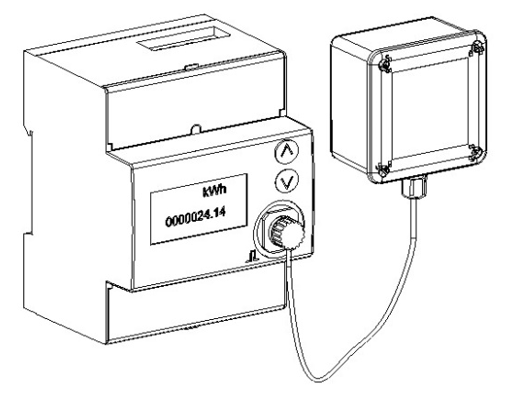
For 3 probes devices, each one is repered by a number:
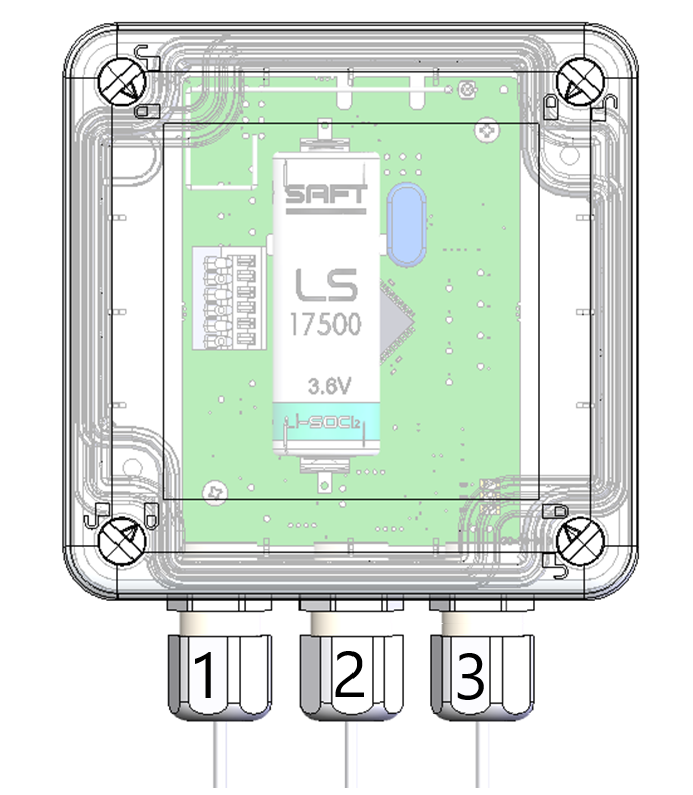
The housing is compatible with the following DIN rail adapter:
Radio propagation
In order for the sensor to operate correctly, the number of obstacles should be limited in order to avoid excessive radio wave attenuation. It is also important to place the sensor as high as possible. The cable gland should be positioned downward.
Autonomy
The information in the table below represents how long the battery can last. It is based on the default configuration at ambient temperature (+25°C) within the optimal operating range of the sensor via a LoRaWAN network (one uplink frame), when the spreading factor used is SF12.
The disposable battery has a 3.6Ah capacity, of which 85% is used.
| Transmission periodicity | Battery life |
|---|---|
| 1 frame/ 24 hours | +15 years |
Human Machine Interface
There are three LEDs on the Flash'O device:
ASSN: blinking until the association with a network is done. Since release v3.5.2.5530, after 6 hours in association searching the led blinks all 1 minute.

FNC: blinks for each activated input (in the limit of one blink each 250ms) during first two minutes after startup, after it blinks every minute if an input is activated.during the passed minute. Blinks in configuration mode for each activated input.
CNF: blinking in configuration mode.
To start up the device, a magnet must be placed next to the sensor for one second (to the left of the cable gland). The red LED blinks quickly during this step. After one second, the red LED stops blinking and the green LED blinks slowly until the association is done.
To switch off the device, repeat the same operation by placing the magnet next to the sensor for 5 seconds. After those 5 seconds, the red LED blinks 5 times slowly.
A reed switch is available under the sticker. A magnet can be used to activate it and perform specific actions on the sensor (switch off, switch on, reassociation…). When the reed switch is activated, the red LED blinks quickly.
- Configuration

| Way to trigger it | One passage of the magnet near the reed switch or specific ZCL command |
| Way to stop it | Another passage of the magnet or specific ZCL command |
| Effects on the sensor | The CONF led (red) blinks (3 sec. OFF, 3 sec. ON) and the sensor sends an uplink frame every minute. |
| Duration | The configuration mode lasts 10 minutes |
- A reassociation procedure can be requested if no downlink frame is received by the sensor during a given periodicity (4 days by default) or if a given number (100 by default) is reached or in case of failure (no acknowledgement received) by sending an applicative frame to the sensor or via the sensor’s IHM.
The sensor keeps the AppEUi and DevAddr configured, Confirmed/Unconfirmed configuration and all applicative configurations. However, LoRaWAN configurations (channel, data rate …) are lost.
| Way to trigger it | Three passages of the magnet near the reed switch or ZCL command from LoRaWAN cluster. |
| Effects on the sensor | The ASSN led (green) blinks as the “no commissioned sensor” LED is lit. |
- A factory reset is available on Watteco’s sensors. It deletes all the applicative settings saved in the flash memory (i.e. configured batches and reports will be deleted).
The sensor keeps the AppEUi and DevAddr configured. However, LoRaWAN configurations (channel, data rate…) and applicative configurations are lost.

| Way to trigger it | Two quick passages and a long passage of the magnet near the reed switch |
| Effects on the sensor | The CONF LED (red) and ASSN LED (green) blink at the same time briefly. All the applicative settings (for batches and reports) are deleted. The blinking is illustrated below this table. |
Applicative layer
Codecs are available to decode frames: Downloads
Flash'O incorporates the following clusters:
| Cluster | Cluster name | Managed attributes |
|---|---|---|
| 0x0000 | Basic | All |
| 0x0050 | Configuration | All |
| 0x8004 | LoRaWAN | All |
| 0x000F | Binary Input | All |
Default configuration
A default configuration is set for the one probe:
- The device reports each day the counter value associated with input 1+/1- (EndPoint 0 / Cluster Binary Input / Attribute Count).
A default configuration is set for the three probes:
- The device reports each day the counter value associated with input 1+/1- (EndPoint 0 / Cluster Binary Input / Attribute Count), input 2+/2- (EndPoint 1 / Cluster Binary Input / Attribute Count), input 3+/3- (EndPoint 2 / Cluster Binary Input / Attribute Count)
Every change made to the default configuration must comply with the legal duty cycle (for example, the most restrictive in the EU is 0.1%, which corresponds to approximately 1 frame per hour with SF12)
Frame examples
All frames have to be sent on port 125
Standard report
Report
Report of the present value of connector input 1+/1- → Applicative payload is: 11 0a 00 0f 04 02 23 00 00 00 02 11: Fctrl (Endpoint=0) 00 00 00 02: current value of the counter
Configuration
Configure a standard report on connector input 1+/1- Report the counter every 20 pulses on connector Input 1+/1-. The counter has to be reported at least every 2 hours: →A counter on Input 1+/1 is the End Point 0, Cluster “Binary Input” is 0x000F, and Attribute “Count” is 0x0402. The maximum field has to be 0x1c20 to have a report every 2 hours and the minimum field has to be 0x0000 to have a report immediately after the right incrementation. The delta has to be configured to 0x14 for a report every 20 pulses. Applicative payload is: 11 06 00 0f 00 04 02 23 00 00 1c 20 00 00 00 14 11: Fctrl (Endpoint=0) 00 00: minimum reporting interval (0 seconds) 1c 20: maximum reporting interval (2 hours) 00 00 00 14: reportable change (20 pulses) →Response: 11 07 00 0f 00 00 04 02 To disable the previous configuration, change the value of the minimum and maximum sending interval and the delta to 0: 11 06 00 0f 00 04 02 23 00 00 00 00 00 00 00 00
Batch report
Configuration
• Configure a batch report on Flash'O 1 probe, on binary input counter of connector 1+/1- and voltage battery:
Timestamp and record the pulses counter with a resolution of 1, a value has to be saved at least every 30 minutes or on a rise of 50 pulses. Timestamp and record the battery voltage with a resolution of 0.1V, a value has to be saved at least every 24 hours. All data have to be concatenated and sent every 24 hours at the most.
→The solution to concatenate several different physical values in the same frame is to use batch reporting.
For the batch, the number of physical measurements that will be sent must be known in order to choose a label for each of them and the size of these labels.
As mentioned in the previous paragraph, we will have only two kinds of measurements to manage, thus two different labels. The tag size to be used for two labels is 1. Label 0 can be used for binary input counter and label 1 for the disposable battery level.
Two frames must be sent to configure this batch.
| Label number | Tag label | Tag size |
|---|---|---|
| 1 or 2 | 0/1 | 1 |
| 3 or 4 | 00/01/11/10 | 2 |
| 5 or 6 or 7 or 8 | 000/001/010/011/100/101/110/111 | 3 |
| ... | ... | ... |
A counter on Input 1+/1- is the End Point 0, Cluster “Binary Input” is 0x000F, and Attribute “Count” is 0x0402.
The battery voltage: Cluster "Configuration" is 0x0050, and attribute "Node power descriptor" is 0x0006.
Applicative payload of the count on input 1+/1- 11 06 00 0f 1d 04 02 00 00 00 80 1e 00 00 00 32 00 00 00 01 01 11: Fctrl (Endpoint=0) 1d: 0b00011101 => 0001110: size of configuration string after attribute ID (14 bytes) 00 00: minimum reporting interval (0 seconds) 80 1e: maximum reporting interval (30 minutes) 00 00 00 32: required delta value (size: 4 bytes for attribute Count => attribute type = 23, 50 pulses) 00 00 00 01: required resolution 01: tag value (ob00000001 => 00000: tag label, 001: tag size) →Response: 11 07 00 0f 00 01 04 02
Applicative payload of the battery voltage 11 06 00 50 15 00 06 04 80 0a 85 a0 00 64 00 64 09 11: Fctrl (Endpoint=0) 15: 0b00010101 => 0001010: size of configuration string after attribute ID (10 bytes) 80 0a: minimum reporting interval (10 minutes) 85 a0: maximum reporting interval (24 hours) 00 64: required delta value (size: 2 bytes for attribute Node power descriptor => attribute type = 41, 100 pulses) 00 64: required resolution (0.1V) 09: tag value (ob00001001=> 00001: tag label, 001: tag size) →Response: 11 07 00 50 00 01 00 06
To decode the batch reception, use br_uncompress. Type for binary input counter is U32 (10) and U16 (6) for the disposable battery power, so the following command must be used:
echo "26150020e06001d71e0000a0650f" | ./br_uncompress -a 1 0,1,10 1,100,6
Result:
DECOMPRESSION SERIES
cnt: 5 # Batch counter (from 0 to 7)
263 # Timestamp in seconds of sending of the frame
#Format of data is: Timestamp of Measurement | Label | Value
263 0 45 # Timestamp: 841 s Label 0: counter pulse Value: 45
263 1 3000 # Timestamp: 811 s Label 1: Disposable battery Value: 3.0V
Known Issues
- Binary Input batch:
- Version: V3.5.2.5358.5408, V3.5.2.5466.0, V3.5.2.5466.5514
- Issue: Counting Indexes are always to 0 in batch report.
- Workaround: Set a standard report on each input on which a counting is necessary:
- Input 1: 1106000f000402230000fffe00000000 => send a standard report all the 22 days
- Input 2: 3106000f000402230000fffe00000000 => send a standard report all the 22 days
- Input 3: 5106000f000402230000fffe00000000 => send a standard report all the 22 days
- Incorrect counting:
- Version: 50-70-071-007
- Issue: The product has difficulty to read the led of different meters.
- Workaround:
- Sagem C3500: put the probe on the input 2 and set the report on this specific input.
- Landis Gyr L19C1: put the probe on the input 2 and set the report on this specific input.
- Actaris QE16M: put the probe on the input 3 and set the report on this specific input.
- Not possible on the 50-70-206 which have the same 3 inputs as the same sensibility of the 1st input of the 50-70-071.

